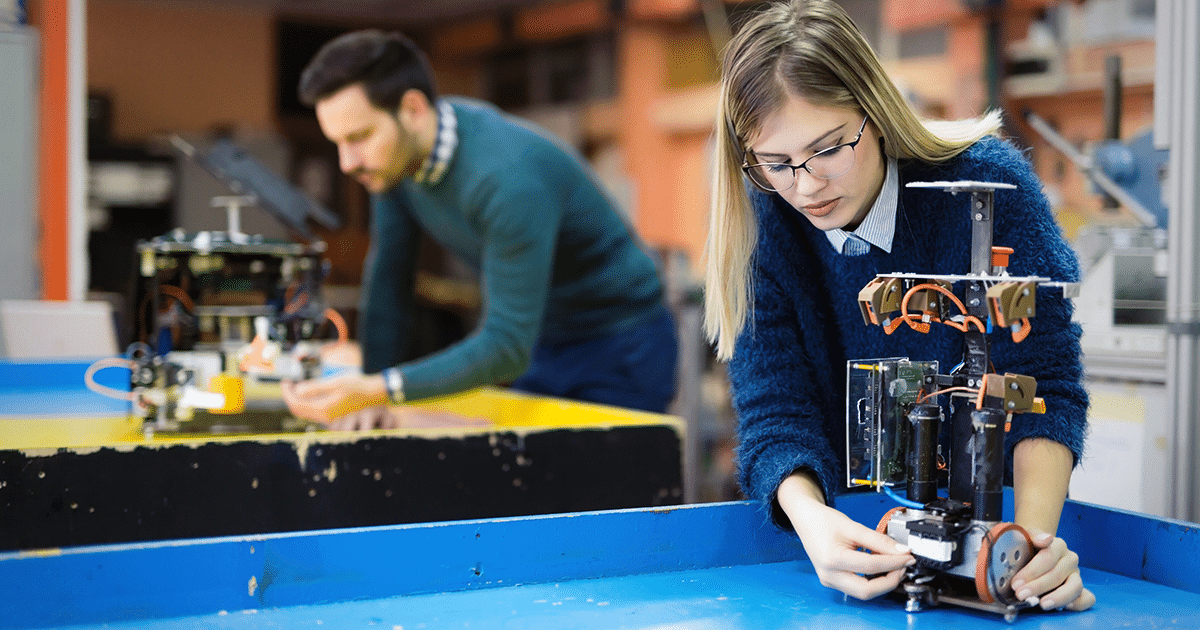Jobs aren’t going away, but they are evolving. Future career success means learning the right skills, now.

Anywhere the future of work is being thought about, debated, forecast, and fought over, there are conversations going on about the role automation is going to play. The primary question that shows up in virtually every conversation takes on many forms, but the gist is always the same—will the robots free us up for better jobs, or will they simply take our existing ones away?
Artificial Intelligence, robotics, and the future of work
Depending on which stories and statistics you read, it can be hard to understand what the future really holds. A widely-reported study from Gartner said that while AI is predicted to automate 1.8 million jobs away by 2020, it will also create 2.3. million new jobs over that same period. And the World Economic Forum has predicted a loss of 75 million jobs by 2022, while simultaneously forecasting the creation of 133 million new jobs.
What can we conclude from these numbers? At the most basic level, it would seem that we can count on there still being jobs. But at the same time, it also appears likely that a great many of the “new” jobs are going to require very different skills
Not all the numbers we have to work with are speculative. Dmitry Matskevich, Co-founder & CEO of Dbrain, wrote an article on this subject recently, titled, How the AI Revolution Will Create Jobs, Not Destroy Them. In his post, he cited a recent study from Capgemini:
“In a recent study of 1,000 companies, implementing AI created job opportunities in 80% of cases.”
A recent article from Internet of Business cited another contemporary use case—a new report from the Asia Development Bank (ADB)—to state that, “robots and automation are creating more jobs in Asia than they destroy.”
Studies like these, and countless others out there, serve to reinforce the idea that there will still be jobs, but the jobs will change.
The future of learning
Here at Udacity, our School of Autonomous Systems (SoAS) team—which focuses on robots, drones, and self-driving cars—is deeply engaged with these issues. We recognize that we occupy a unique role in the emerging technological landscape because we are empowering the next generation of AI and robotics talent, and the students in our classrooms today will help determine the direction this all takes over the coming years.
What really shapes our vision for how to proceed at Udacity, is our direct connection to employers—industry leaders like Mercedes-Benz, NVIDIA, BMW, and more. We know which roles need to be filled, and we know what skills are required to fill them. The truth is, the world IS changing. And while jobs aren’t going away, they ARE evolving. This means some skills will be less in-demand, while others are going to be far more so.
Based on my experience at Udacity, I know firsthand that software engineers, machine learning practitioners, data engineers, and of course robotics engineers are all in high demand with many different companies, all of which are hiring for multiple positions across a huge swath of industries, fields, and skill levels. That’s one of the things that’s especially compelling about robotics—these technologies can bring value to almost any industry, which means more opportunity for anyone with the skills to contribute. Skills like path planning, localization, computer vision, and deep learning are all increasing in importance. Tools that used to be less known, like Linux, ROS, and Tensorflow, are also starting to become more mainstream.
In-demand skills, and broad-based opportunity
If you were sitting across from me today, and you asked me, “What can I do to ensure I still have a job in 10 years,” my answer would actually be pretty simple. Start learning these technologies today. It’s not as hard as it may seem, it’s not as expensive as you might think, and it’s not going to take as long as you might expect. I’m serious about this!
First off, it’s important to understand that you don’t have to be an elite robotics expert to be a part of the 21st century economy, and you don’t have to know AI inside and out to get hired. One of the great things about these technologies becoming more commonplace is that the employment opportunities are becoming broader—10 years ago, there really wasn’t such a thing as an “entry-level” robotics job. But that’s changing rapidly. Even a complete novice who’s never written a line of code in their lives is just a few years away from being employable in an autonomous systems robotics role.
Let me give you an example career path. If you’ve never written a line of code, our Intro to Programming Nanodegree program is for complete beginners. It takes 3 months to successfully complete. From there, you’re ready for our Intro to Self-Driving Cars Nanodegree program, where you’ll apply your new Python skills, and start to learn C++ and advanced concepts like computer vision and machine learning. This takes 4 months. From here, you’re ready to dive into much more advanced programs. Interested in learning to code home robots, robotic arms, and even a Mars Rover? You can study to become a Robotics Software Engineer in 8 months. Or, if becoming a Self-Driving Car Engineer is your goal, you can be ready in 6 months. If drone engineering is where your interests lie, you can complete the Flying Car and Autonomous Flight Engineer program in 4 months.
Whichever path you choose, you’ll have some hard work ahead, but the experience you’ll gain, and the skills you’ll learn, will be more than worth it! Plus, we have mentors, study groups, and career support to help you along every step of your journey.
What this all comes down to is embracing lifelong learning. Despite how misleading I find most of the fear-mongering headlines, the truth is, the robots ARE coming. But that’s not a bad thing, if you start planning now. Our classrooms are open, and so is your future!





